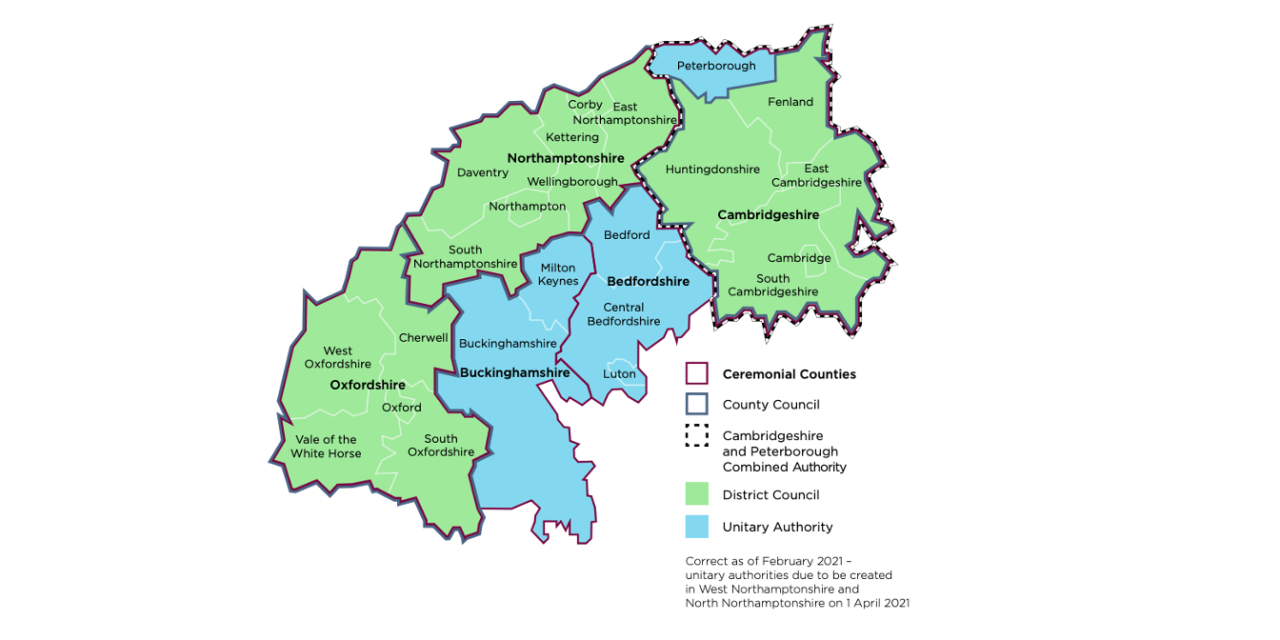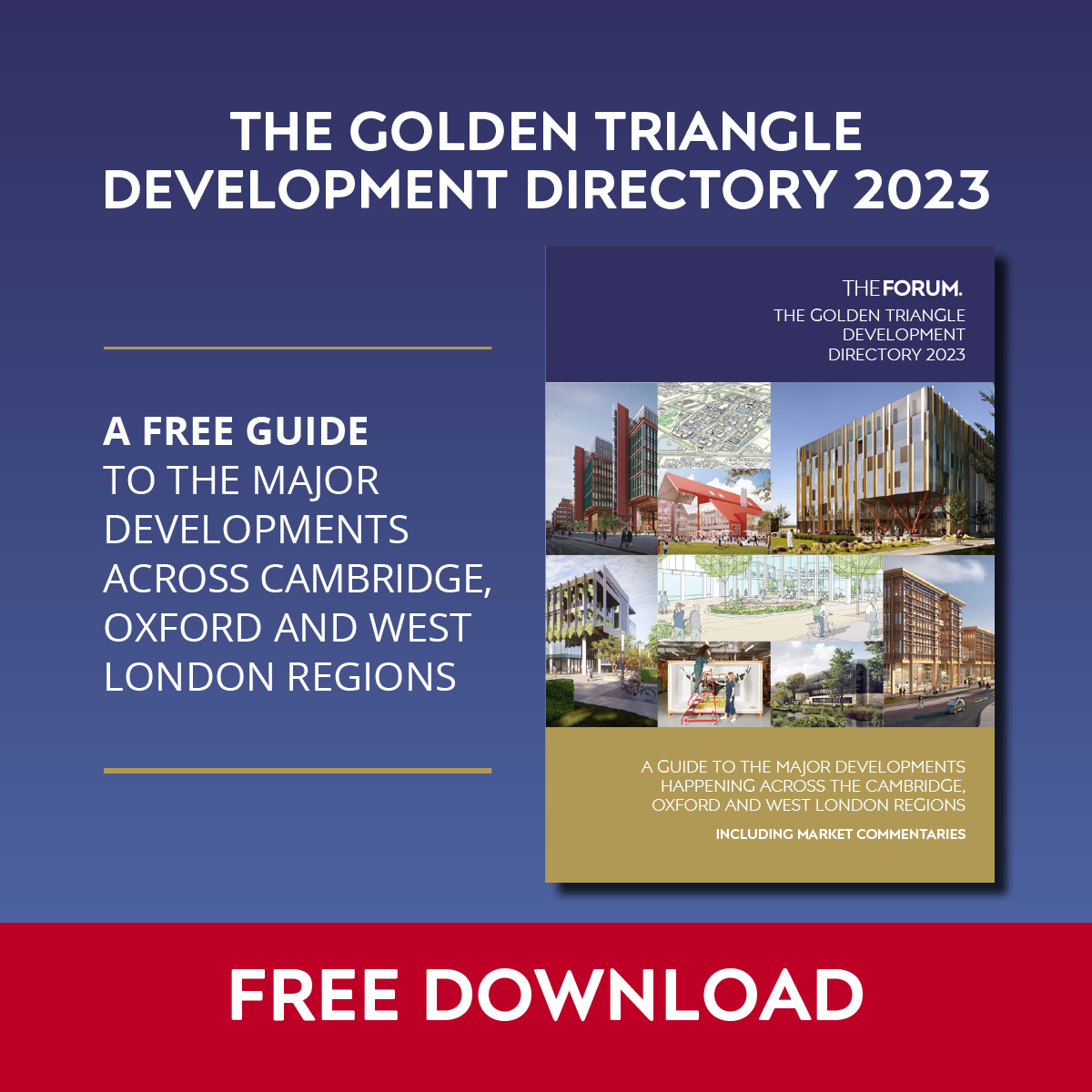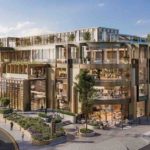UK Property Forums consultant Hugh Blaza put himself (digitally) among those leading discussions over the Arc as challenges to its development were discussed.
Where to start? No, not me; I’m talking about the Arc Leaders Group and the Ministry of Communities Housing and Local Government (MCHLG).
No need to recite the rationale for and the reasons why what’s happening in this 100-or-so mile wide swathe of land between Oxford and Cambridge is so ‘hot’. That’s a given.
What isn’t a given is how the development of the Arc is going to be structured, not only to accommodate the growth but to do it in ways which deliver on the stated ambition for the region to show the world how it can be done in a sustainable way which will achieve, or better, beat the climate challenge targets. To be truly pioneering, in other words.
The webinars I tuned into this week show that there are people who will be able to deliver the solutions. And the MCHLG says it’s listening; its spatial strategy consultation is under way.
What comes first? Surely it must be where everything will go. And as far as housing is concerned – whether it’s more or less than the million homes the MCHLG says are needed, the experts are in no doubt. I listened to 3Fox’s webinar which hosted Bev Hindle, executive director of the Arc Leaders’ Group, Lord Matthew Taylor, an adviser to successive governments on sustainable development and housing policies and Hannah Smart of Oxfordshire – based edge Urban Design.
That the masterplan has to be established from the outset might seem blindingly obvious, but getting all the regional stakeholders, particularly local authorities with different electoral mandates, to get behind a coherent plan is going to be easier said than done.
But, as Bev pointed out, if they’ve all signed up to the climate emergency, they have to decide on how they’re going to deliver sustainably. And that means co-ordination.
But co-ordination on what? Lord Matthew Taylor is in no doubt that the old ways are – or should be – dead and buried. Why are we even considering building on the outskirts of existing towns and cities where land is most expensive and where their characteristics will be altered forever?
And if, as Catalyst Housing’s Joe Marshall would like, truly affordable housing is going to be provided, the cost of the land on which is will be built is highly relevant.
So why don’t we, as Matthew Taylor suggests, replicate established settlements? Eynsham in Oxfordshire was cited as an example of a highly successful, self-sustaining small town which has been there for centuries.
Poundbury in Dorset is a modern version. (No mention of the massive developments on the edge of Eynsham, but perhaps these are a hangover of planning decisions taken in less radical times).
And as if by magic, here’s Hannah Smart, describing the ambitious plans to build ‘Harrington’ between the Green Belt and an area of outstanding natural beauty in Oxfordshire. A sustainable, attractive new town with everything on the doorstep and easy access to transport links to nearby places of work and study.
Ah, transport links – that leads neatly on to the second webinar I tuned into this week. Entitled Mobilising the Green Arc, in which speakers addressed the challenges for ensuring the new developments across the Arc are supported by a modern and eco-friendly transport network.
How can the three big issues of our health, our climate and the economy be amalgamated with the challenges of accessibility to work, education and leisure.
Our use of cars has to be discouraged, which means we have to be able to access our daily activities by public transport or, better still, by the great invention of the 19th Century, the bike.
The inexorable logic is that the new settlements must be built close to existing transport networks and new networks, including intelligent transport solutions, need to be provided where they don’t yet exist.
As Prof Stephen Potter of the Open University pointed out, continuing to use our current modes of transport, even greener versions of them, won’t deliver on sustainability targets.
It was encouraging to hear that as part of its route planning, East-West Rail is consulting on connectivity – the famous ‘last mile’ conundrum, the clearly desirable solution being to ensure that new dwellings will be built close enough to the rail hubs that a short walk or bike ride will get people to their destinations.
But back to the local authorities. An understanding of the challenges and a partnership approach to tackling them is likely to be far more successful than the imposition of central Government diktat.
But co-ordination and collaboration from the outset between them, the LEPs and bodies such as England’s Economic Heartland, on whose behalf Naomi Green spoke so eloquently, must be the key to unlocking the door.
No getting away from it: the challenge is enormous. Talking, liaison, communication and yes, tuning into webinars should get us there. At least we hope so. ArcWatch will continue to report on progress.
© Thames Tap (powered by ukpropertyforums.com).
Sign up to receive your free weekly Thames Tap newsletter here.
















